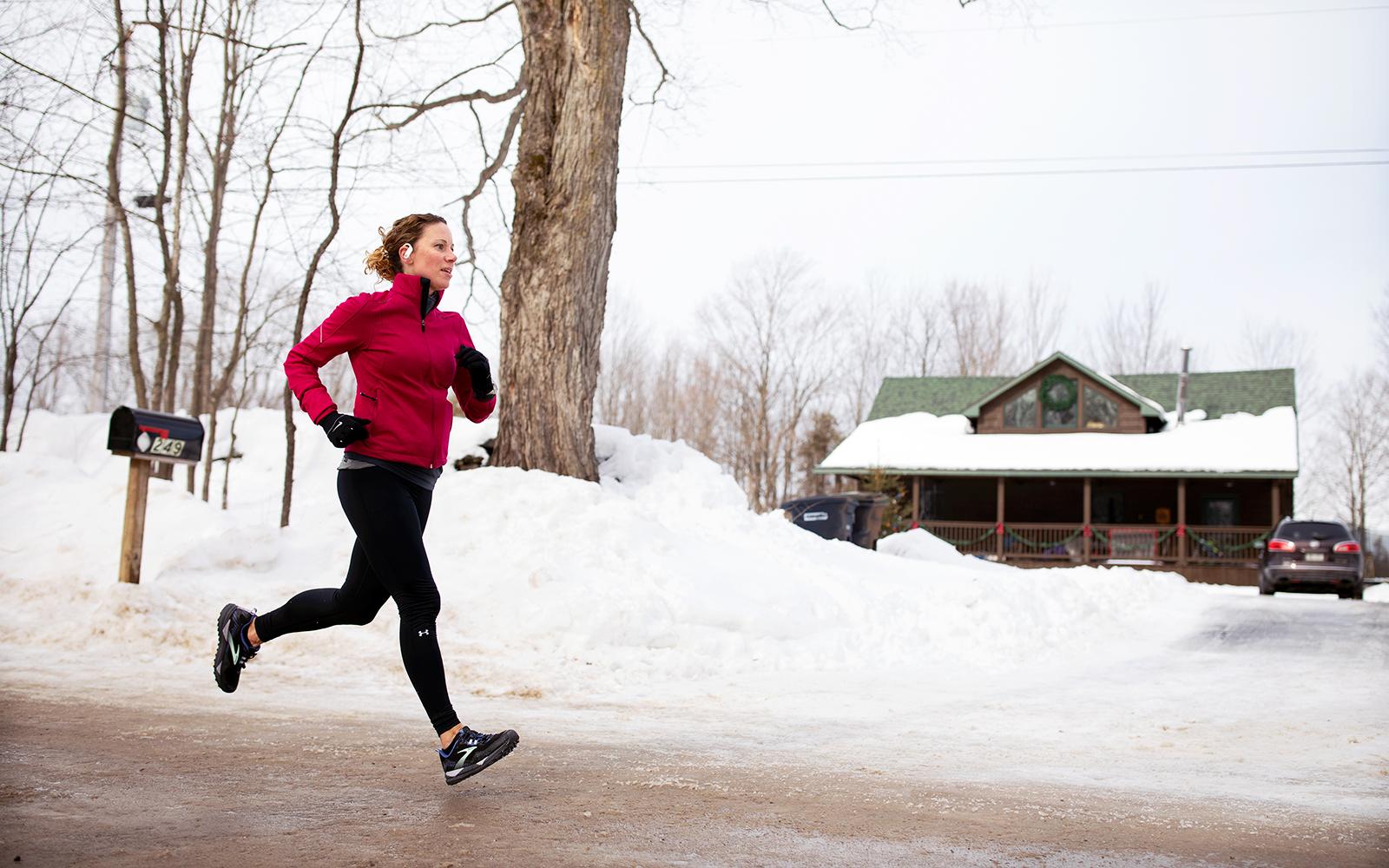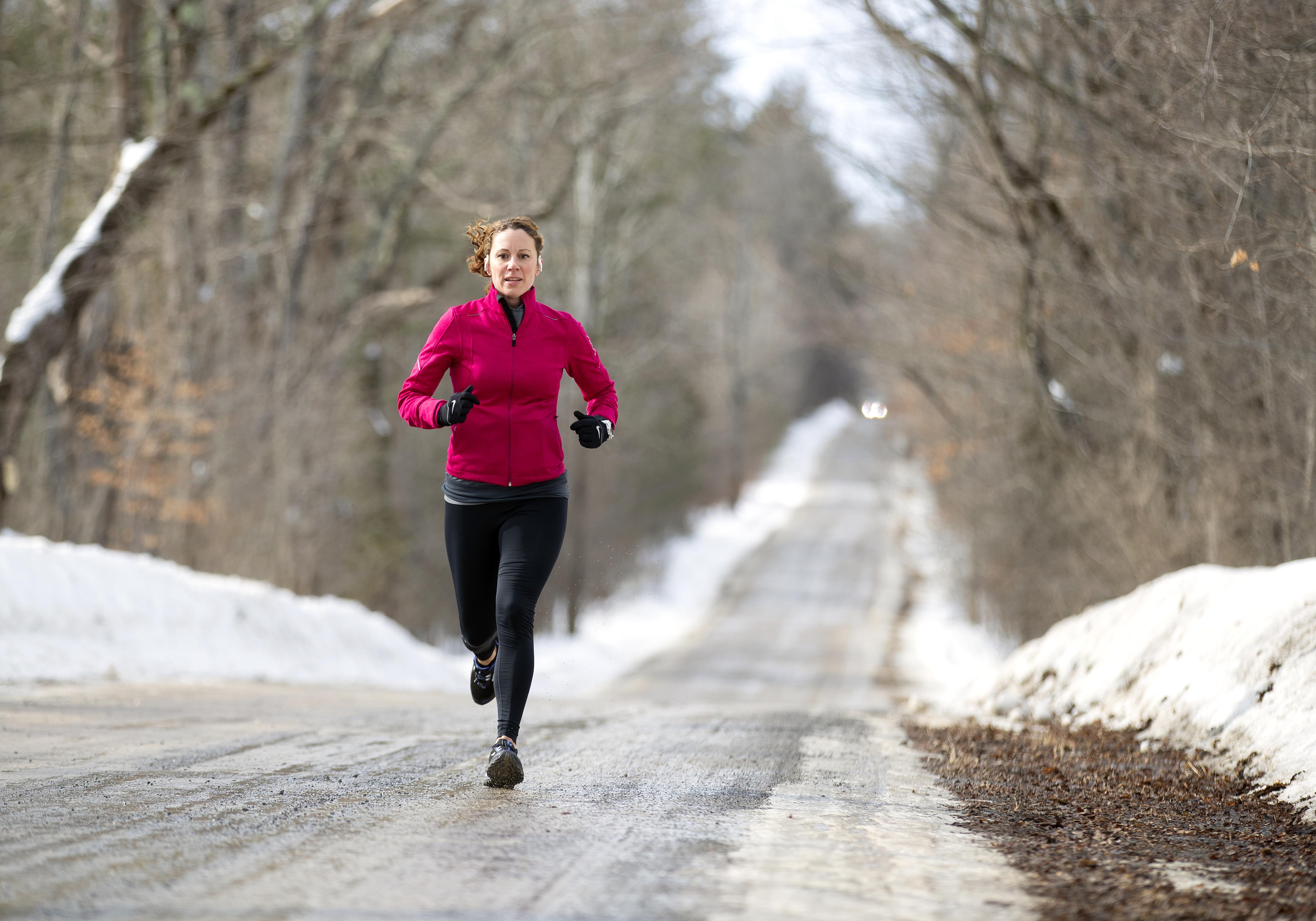Some are college athletes trying to keep their edge. Others are personal fitness hounds pounding the snow on solo cross-country runs—or finding objects in their garage that can work as improvised dumbbells while they dream about gymnasium doors swinging fully open. All would like to survive the fog of Covid-19 with some measure of their pre-pandemic fitness intact.
In Tanya Hewitt’s personal training class at SUNY Potsdam, the title of the course has taken on a new meaning. Battling to keep her muscles firm, women’s hockey player and exercise science major Stephanie Dunlap ’22 runs the stairs in her house and uses a car battery for squat exercises. Chase Sawyer ’24, who competes in power lifting tournaments, has cleared out a small room at his place, lined the floor with boards and mats, and jammed in a weight rack which he says he was fortunate to have bought before the demand for exercise equipment—and the cost—skyrocketed.

Sawyer has just enough room to maintain his bench, squat and deadlift routines. Oddly, there’s something satisfying in making do with what he has.
“Honestly, now that I have my own gym, I don’t miss anything about going to the gym,” he says.
Sawyer has plenty of company, as fitness enthusiasts across the nation express skepticism about returning to public workout spaces and gym fees. Others find their improvised routines won’t ever replace the motivation of mass endeavor, the social vibe of the weight room and even the blare of shopworn workout tunes. The campus fitness center at Maxcy Hall is preparing this week to reopen by appointment, with safety restrictions, offering some prospect of relief even as home workouts remain key to student fitness. A return to the gym can’t happen too soon for Dunlop, who says she faces an ongoing challenge to burn enough calories and hang onto muscle mass.
“There’s deep snow everywhere; I’m trying to do cardio and it’s really difficult, so I want a treadmill where I don’t have to run up and down the stairs and be super loud for everybody,” she says. “But you have to do what you can to improvise.”
Some college students are turning to apps to help fill in the blanks. Troy Sweeney ’23 has started tracking his calories using MyFitnessPal, after a broken wrist and COVID-19 safety protocols forced the normally active exercise science major to lie low. Dunlop is doing yoga to keep the flexibility that hockey demands, following content posted on YouTube and TikTok. Other students are finding digital guidance for the pandemic fitness world on Pinterest—and using it to help cut the double layers of isolation and deep winter.

They aren’t the only ones getting creative. Hewitt, who chairs the SUNY Potsdam Department of Public Health and Human Performance, is an endurance athlete accustomed to advanced marathon training. These days, she has been using a wheel from a carnival bumper car for a rollout routine to keep strength in her core. She has also set up an obstacle course in her backyard.
The battle isn’t just for physical fitness—it’s also in the name of mental health. College students everywhere report increases in stress and anxiety rooted in concern for their own health and that of their loved ones. They’re experiencing difficulty concentrating, interrupted sleep patterns and isolation due to social distancing, Hewitt says. Regular physical activity can be a positive coping strategy for students feeling the strain of the prolonged pandemic. Helping reduce feelings of stress and anxiety, a good movement of the blood promotes healthy sleep and support cognitive functions such as concentration and learning.
A pandemic workout doesn’t need to be complicated, Hewitt says.
“Try a brisk 30-minute walk at lunch, or a YouTube yoga video,” she advises. “Even just turning on music and dancing can bring positive mental and physical benefits when they’re done on a regular basis.”
Article by Bret Yager, Photos by Jason Hunter
